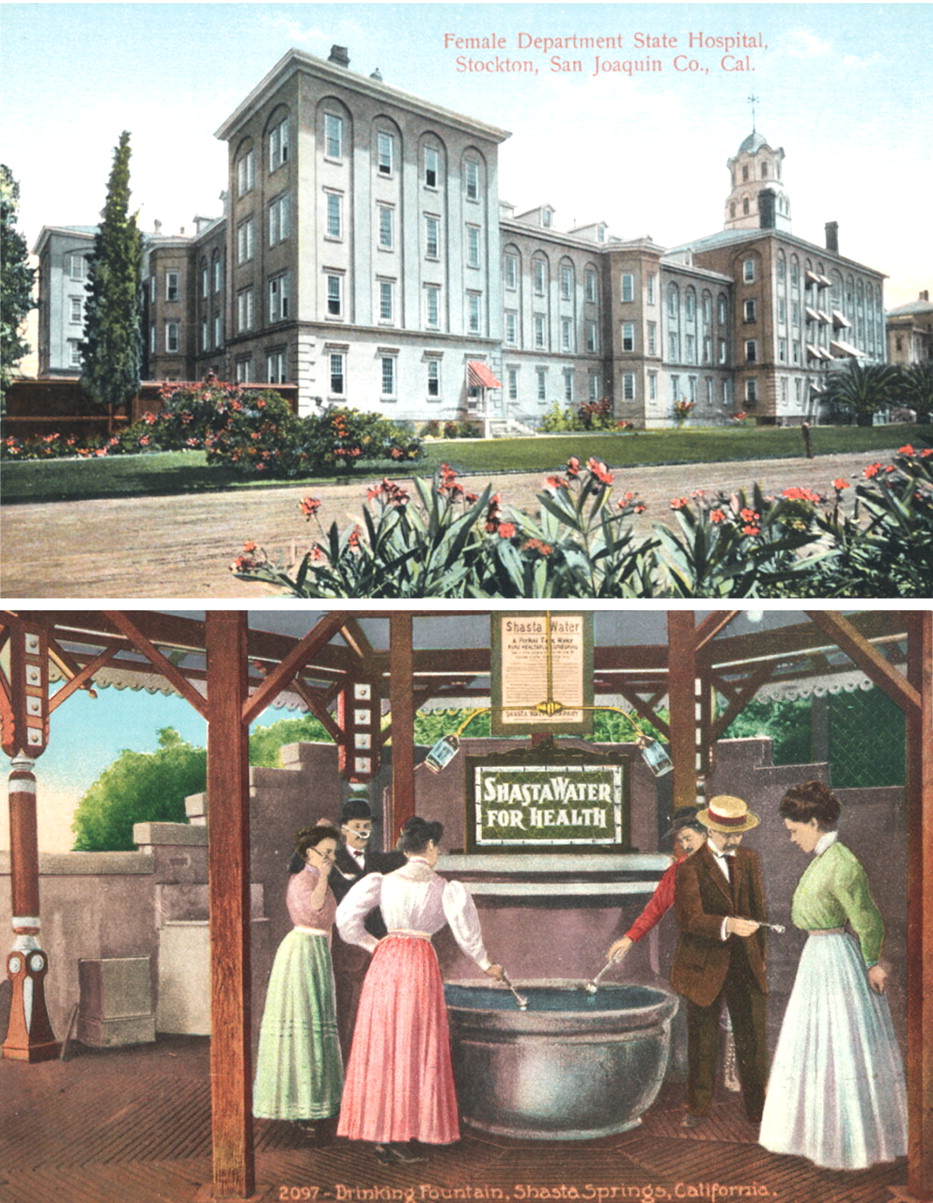Psychiatry's Landmarks Live on Through Postcards
Are you interested in mental health care of yore, when palatial asylums and sanitariums were at their zenith of development and mineral springs and even mud baths were heralded as having mental and physical therapeutic qualities?

One of Robert Gardner's historic postcards (top) shows the state mental hospital at Stockton, Calif. The other touts the health qualities of the water at Shasta Springs, Calif.
Then you should check out a collection of historic mental hospital postcards that will be shown at the APA annual meeting in San Diego in May.
The postcard collection belongs to Robert Gardner, M.D., of Lynchburg, Va., who jokingly refers to himself as “Dr. Nostalgia.”
This is the first time that the aggregation will be shown on the West Coast, Gardner told Psychiatric News. It also contains “bells and whistles” that it didn't possess in its previous showings, he said.“ There is an increased international flavor, as I have discovered many new foreign cards from institutions in Canada, England, Germany, and other countries.”
Gardner's interest in mental hospital postcards started many years ago.“ I went to a stamp show, and one of the dealers had a box of postcards. I fingered through them and noticed that two were of mental hospitals. It never occurred to me that there were mental hospitals on postcards. But if you think about it, why not? So I bought them and that started it—I started collecting them.”
Later, after Gardner had acquired a sizable collection of mental hospital postcards, he met another psychiatrist who collected them as well. It was Leonard Rothstein, M.D., of Baltimore. He and Rothstein got together and exhibited postcards from their joint collection at the 1978, 1986, and 1994 APA annual meetings. Rothstein died in 2003, so Gardner has been exhibiting solo since.
Does Gardner have any favorite mental hospital postcards?
“Of course, being a Virginian,” he replied, “I like the ones showing the first state public mental hospital in the United States—what was earlier referred to as the Williamsburg Lunatic Asylum and what is now known as Eastern State Hospital.”
He also tends to favor postcards issued during the earliest years of the 20th century because “they were so gorgeous and well made.”
Picture postcards came into being around 1900, about the same time that American mental hospitals were built in large numbers. Thus Gardner's 2000-plus postcards are collector items because they have historic value beyond the subject matter. Indeed, at the 2005 APA annual meeting, three psychiatrists wanted to purchase the entire collection. But Gardner said no thanks. ▪



